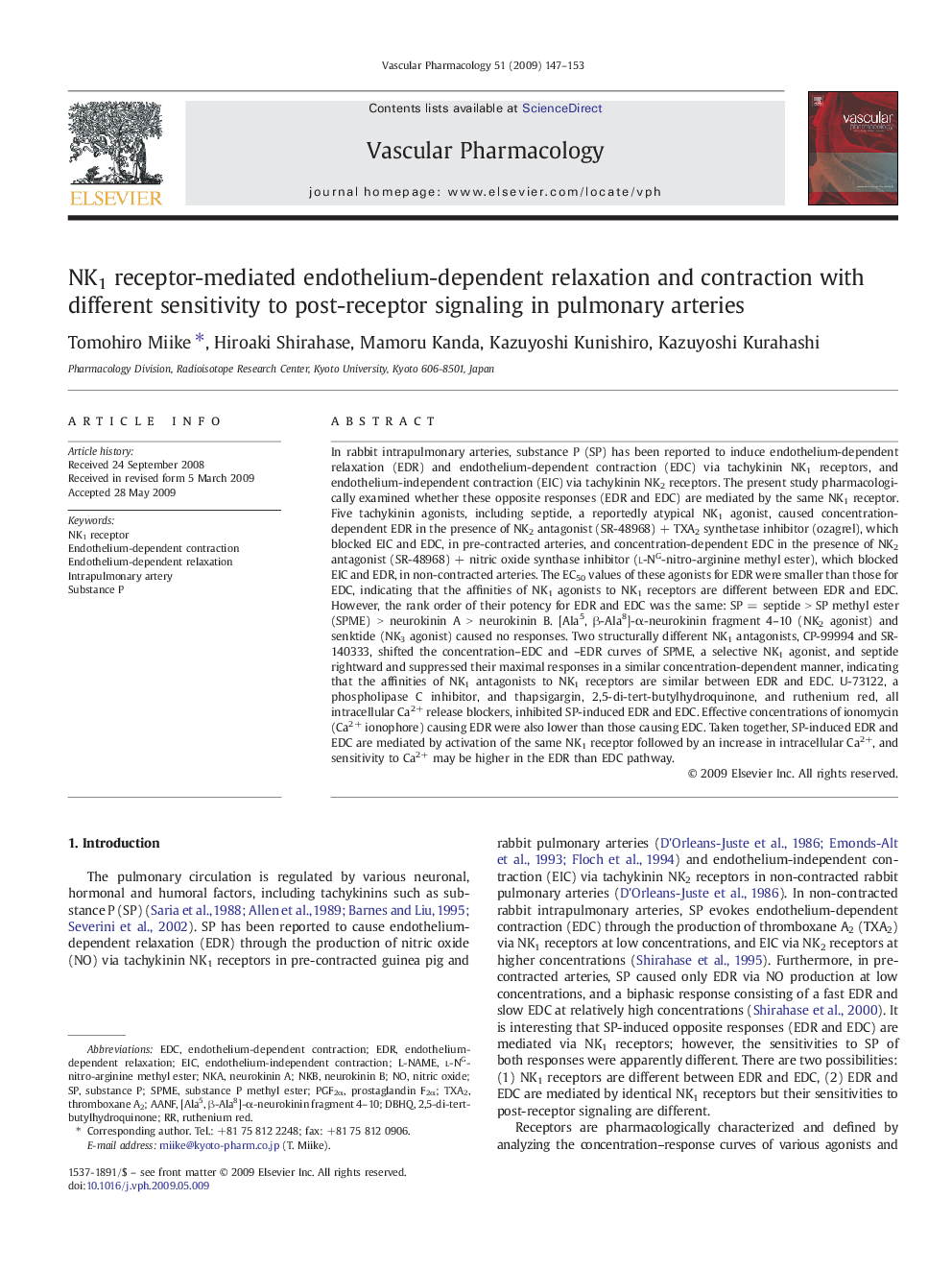| کد مقاله | کد نشریه | سال انتشار | مقاله انگلیسی | نسخه تمام متن |
|---|---|---|---|---|
| 2574503 | 1561275 | 2009 | 7 صفحه PDF | دانلود رایگان |

In rabbit intrapulmonary arteries, substance P (SP) has been reported to induce endothelium-dependent relaxation (EDR) and endothelium-dependent contraction (EDC) via tachykinin NK1 receptors, and endothelium-independent contraction (EIC) via tachykinin NK2 receptors. The present study pharmacologically examined whether these opposite responses (EDR and EDC) are mediated by the same NK1 receptor. Five tachykinin agonists, including septide, a reportedly atypical NK1 agonist, caused concentration-dependent EDR in the presence of NK2 antagonist (SR-48968) + TXA2 synthetase inhibitor (ozagrel), which blocked EIC and EDC, in pre-contracted arteries, and concentration-dependent EDC in the presence of NK2 antagonist (SR-48968) + nitric oxide synthase inhibitor (l-NG-nitro-arginine methyl ester), which blocked EIC and EDR, in non-contracted arteries. The EC50 values of these agonists for EDR were smaller than those for EDC, indicating that the affinities of NK1 agonists to NK1 receptors are different between EDR and EDC. However, the rank order of their potency for EDR and EDC was the same: SP = septide > SP methyl ester (SPME) > neurokinin A > neurokinin B. [Ala5, β-Ala8]-α-neurokinin fragment 4–10 (NK2 agonist) and senktide (NK3 agonist) caused no responses. Two structurally different NK1 antagonists, CP-99994 and SR-140333, shifted the concentration–EDC and –EDR curves of SPME, a selective NK1 agonist, and septide rightward and suppressed their maximal responses in a similar concentration-dependent manner, indicating that the affinities of NK1 antagonists to NK1 receptors are similar between EDR and EDC. U-73122, a phospholipase C inhibitor, and thapsigargin, 2,5-di-tert-butylhydroquinone, and ruthenium red, all intracellular Ca2+ release blockers, inhibited SP-induced EDR and EDC. Effective concentrations of ionomycin (Ca2+ ionophore) causing EDR were also lower than those causing EDC. Taken together, SP-induced EDR and EDC are mediated by activation of the same NK1 receptor followed by an increase in intracellular Ca2+, and sensitivity to Ca2+ may be higher in the EDR than EDC pathway.
Figure optionsDownload as PowerPoint slide
Journal: Vascular Pharmacology - Volume 51, Issues 2–3, August–September 2009, Pages 147–153